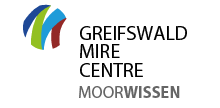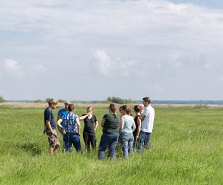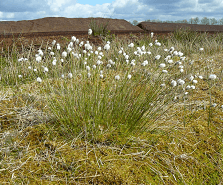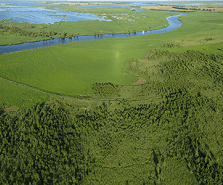CLEARANCE Work Packages
WP 1 Upland sources recharging water buffer zones
WP1 aims to build a tool and framework for identification of spatially explicit nutrient input hotspots. The identification tool will be tested in well-investigated reference catchments. The spatial analysis will distinguish between source areas dominated by N or P outputs incorporating soil texture, soil organic matter, cropping practices, drainage/irrigation practices, seasonal water balance and composition of flow paths (from edge-of-field to the sea). WP1 provides an added value for land & water authorities by incorporating biogeochemical key processes. WP1 will also deliver a tool to estimate phosphorus mobilization upon (artificial) flooding for 3 main soil types (sand, loam, organic) in the participating countries.
WP 2 Wetlands as buffers: quantifying nutrient capture
In WP2 we will gather data on nutrient removal or retention in different types of WBZ. It will include both literature data and data from our own monitoring programs and research activities. The data will be put into a database according to type and removal/retention effectiveness and it will end up with a paper describing different types of WBZ as measures for nutrient removal.
In step 2, based on input from WP1, we will quantify nutrient removal in existing WBZ in the case catchments as well as quantify nutrient removal in potential WBZ in the case catchments. This work will include making phosphorus risk analysis on potential WBZ, which are at present used for agricultural purposes. For existing and potential WBZ subjected to flooding, sedimentation of suspended solids and particulare phosphorus will be quantified. Additionally, nitrogen removal through denitrification will be quantified. A data base containing capture and removal of nutrients in all case catchments will be set up to be used in WP6.
WP 3 Closing the loop: biomass use, nutrient removal & commodification of nutrient recycling
Our work in WP3 focuses on the possibilities of combining biomass use and nutrient capture in WBZ, including recycling options of waste products (ash, substrates). Research on paludiculture (a land use concept for wet and rewetted peatlands) has shown that wetland biomass can be used successfully for different economic purposes. Common Reed, Reed Canary Grass, Cattail and Sedges are suitable for building materials (blow-in insulation or plates), as biogas substrate, and as solid biofuel. New and innovative production chains for bioplastic and basic material production seem possible but still need to be fully developed and tested for wetland biomass. There is an increasing market demand for products made from straw or other grassland biomass. In this WP, a database on nutrient export potential of wetland plant species will be developed based on literature data. It will combine this data with their use options and required biomass characteristics for different wetland products. The outcome of this work package will be used for the cost benefit analysis carried out in WP 7.
WP 4 Water cycles and hydrological boundary conditions
In WP4 we aim to quantify of water flow in selected riverbasins of Poland, Germany and Denmark. We analysed the origin and quantity of water that may possibly flow towards and through the projected wetland buffer zones (WBZ). Our actions were mainly oriented at hydrological modelling with SWAT, MODFLOW and coupled SWAT-MODFLOW approach. Our goal was to find out the most appropriate methodology for WBZ location in catchments so they can effectively contribute to the catchment-scale mitigation of water pollution with nutrients originating from agriculture.
WP 5 Co-benefits: evaluation of ecosystem services
Preferences of Poles, Germans and Danes will be assessed towards WBZ in small rivers in the case catchments of Narew, Rick and Odense rivers following stated preferences valuation methodology. Three regional discrete choice experiments will be conducted to estimate people’s willingness-to-pay for sound characteristics of WBZ.
WP 6 Policy and civil society: barriers and opportunities
WP6 identifies barriers towards a circular economy that values WBZ. Conceptually, the WP draws on the extended social grid analysis for the analysis of innovation processes with sustainability goals. Qualitative interviews will be conducted and three regional stakeholder workshops will be organized (Aarhus, Greifswald and Warsaw). Civil society partner Grüne Liga (subcontract) will conduct a policy survey to assess and evaluate economic principles and instruments for WBZ in a circular economy within the Common Agricultural Policy (CAP) and the Water Framework Directive (WFD) processes. In addition, there will be a policy workshop in Brussels to discuss policy recommendations for the WFD and CAP review processes.
WP 7 Integration & upscaling
WP 7 focuses on integration & upscaling in order to integrate information on different ecosystem services and benefits from WBZ and synthesize them in form of costs and benefits analysis on the catchment scale. The analysis will be conducted for different scenarios of WBZ development including different scales of application of various types of wet buffers. Such an approach will allow for quantification and comparison of different systems regarding use and non-use values. It will also allow for the evaluation of benefits of synergistic functions of WBZ in terms of economic gains and reduction of pollutants (circular economy & resource efficiency perspective).











